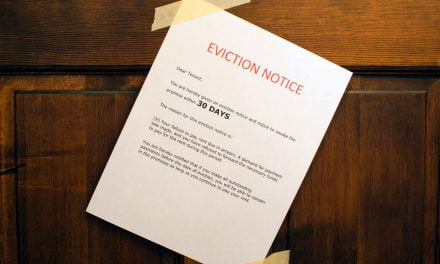35,202 new and resale homes closed escrow in California during April 2011, down 6% from one year ago when 37,481 sales closed escrow. Home sales dropped slightly from their March 2011 numbers in both Northern and Southern California.
The first four months of 2011 suggest the upcoming year will be characterized by a bumpy plateau in home sales volume, with little overall change from 2010’s numbers through the end of 2011 and possibly into 2012. This state of stasis will continue until California employment and homebuyer confidence improve.
In the absence of those two factors, interest rates are the sole driver of real estate sales. Rates are currently low, and are thus likely to spark a jump in sales, but any sales increase will lead to a corresponding rise in interest rates. [For more on the influence of rates on home sales, see the first tuesday Market Chart, Buyer Purchasing Power.]
Real estate owned (REO) resales accounted for an estimated 40% of all resales in the first quarter of 2011— virtually unchanged from 40% one year earlier. [For our most current data on REOs statewide, see the first tuesday Market Chart, REO Resales.]
Absentee homebuyers (a group generally composed of speculators and investors) accounted for 25% of Southern California (SoCal) resales and 22% in the Bay Area, near the historic records of 26% and 23%, respectively, set in February 2011.
“Jumbo loans” (represented by DataQuick as loans of over $417,000) accounted for 17% of sales in SoCal, up from 16% one year earlier, and 31% of Bay Area sales, slipping slightly from 32% last year. 2010 saw a sharp rise over 2009 in the use of Jumbo loans, likely attributable to an increase in foreclosures among high-tier properties, but Jumbo use remains far below its height in the boom times of 2006 and 2007.
FHA-insured loans made up 30% of Bay Area mortgages recorded, a rise from 25% recorded one year earlier (the proportion of FHA-insured mortgages in Southern California was not released this month). The current proportion of FHA-insured loans in the Bay Area remains abnormally high by historical standards. first tuesday forecasts this percentage will drop in the future, as other government agencies and private mortgage insurers (PMIs) now guarantee almost all conventional loans, including loans with lower down payments and down payments from unconventional sources (such as gifts).
Adjustable rate mortgages (ARMs) made up 8% of all SoCal mortgages, relatively unchanged from last month, but up significantly from last year’s level of 6%. ARM use in the Bay Area has increased even more dramatically in recent months, rising from 11% one year ago to a current 16%. This rise in ARM use is cause for alarm, as there is a risk of properties reaching artificially high prices if it continues.
Editor’s note — Wall Street investors have also begun to purchase Jumbo ARMs in the Bay Area for resale in the mortgage backed bonds (MBB) market. The MBB market for jumbos has been dormant for three years. This small opening will make it easier for sellers of high tier property in the Bay Area to get a higher price.
However, ARMs peaked across California in May 2010, and any drop in ARMs is a good indicator the market volume and pricing will not increase over the next 12 to 24 months. The increase in the use of ARMs in the Bay Area is to be watched, as any further increase over the next six months will very likely artificially sustain or push prices of high-tier homes upward excessively. [For more information on ARMs in the real estate market, see the first tuesday article, The iron grip of ARMs on California real estate.]
Cash purchases represented 31% of SoCal and 27% of Bay Area sales in April 2011. Although these numbers are down slightly from February 2011’s record high, they remain abnormally high in both districts, indicating speculators are still at work, probably flipping under land sales contracts or let-to-buy arrangements called lease-option sales, which go unrecorded. These transactions remain, for the most part, invisible to the public.
The recent spike in cash purchases indicates that speculators are still optimistic about a potential recovery in real estate sales volume and pricing, but both have slipped since late 2010; not a good sign for speculators, who require very high profits to be successful.
For more extensive history and analysis of monthly and annual home sales in California, see the first tuesday Market Chart, Home Sales Volume and Price Peaks.
Re: “California April Home Sales” from MDA Dataquick













